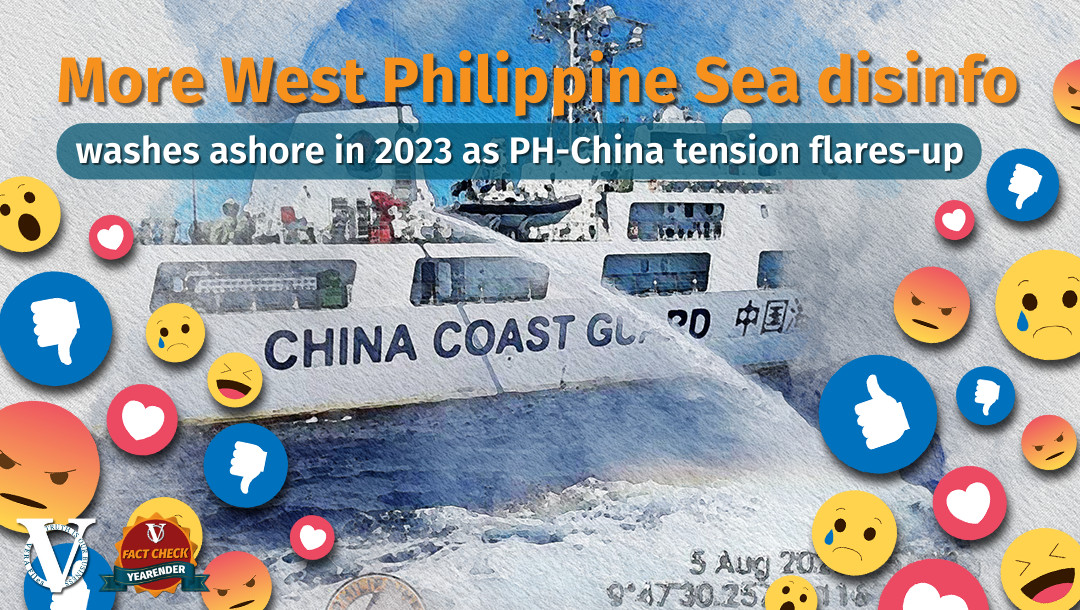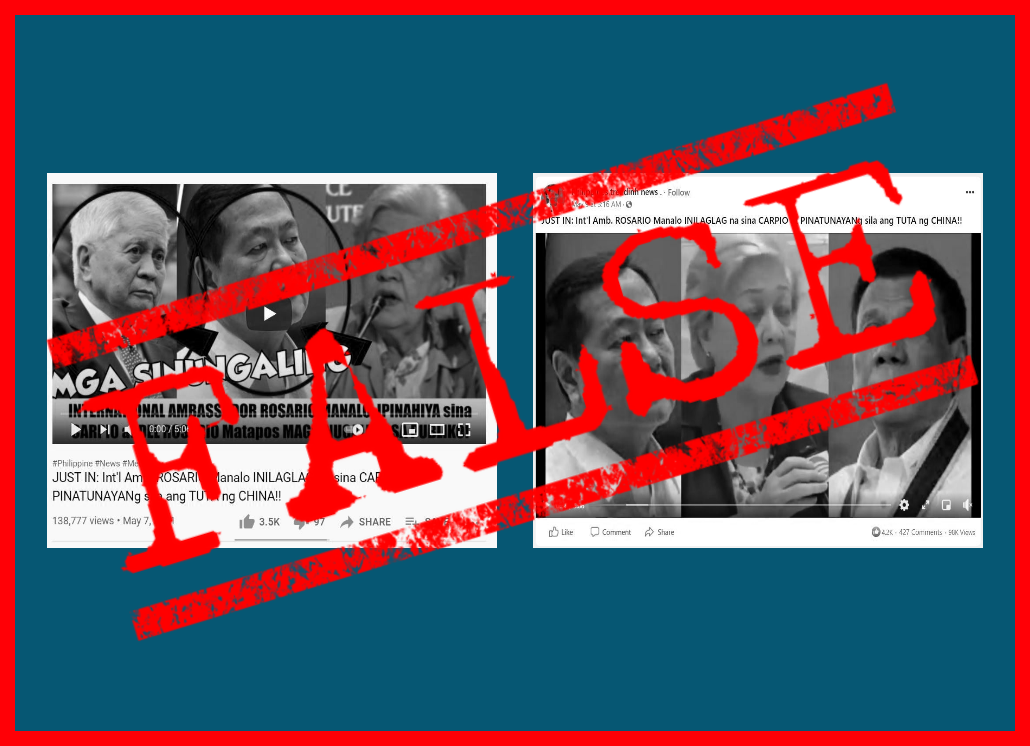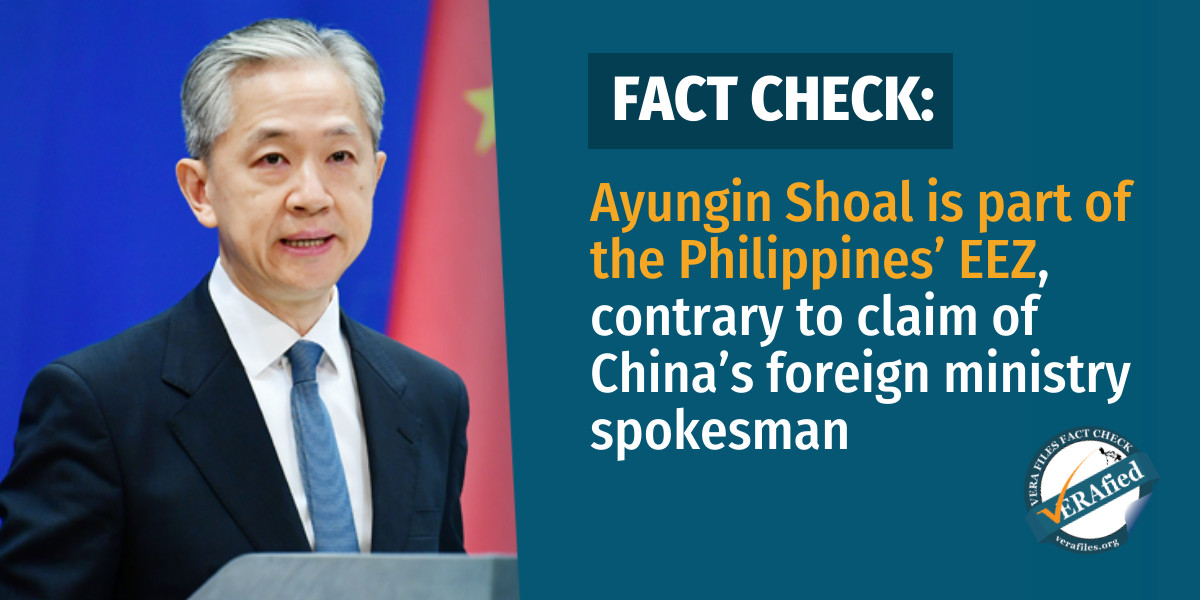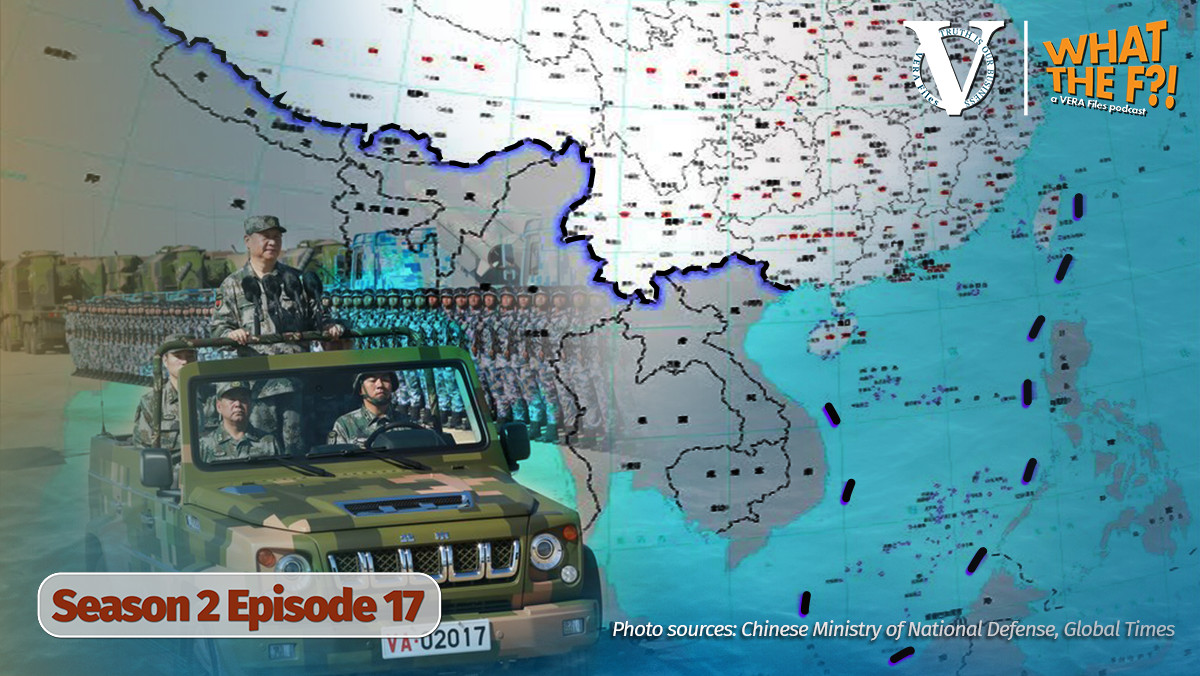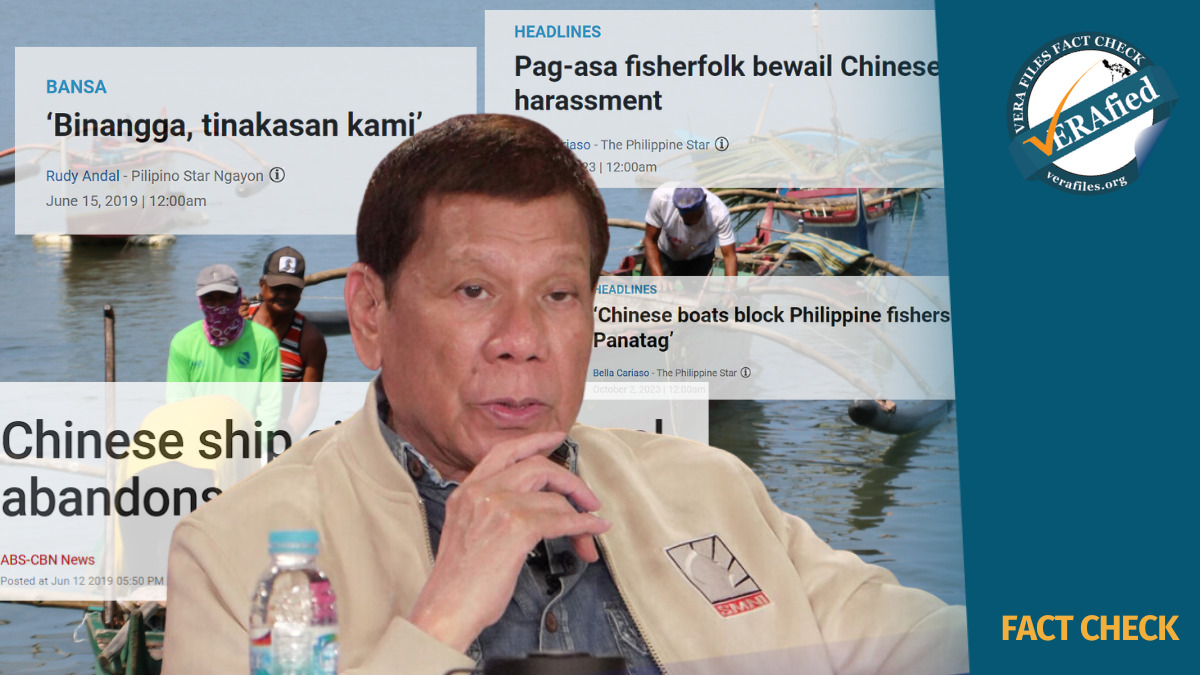On Dec. 10, China reportedly sent a record number of coast guard and maritime militia vessels to intercept a resupply mission to BRP Sierra Madre, a dilapidated Philippine ship at Ayungin Shoal that serves as a military outpost. Apart from being hit by water cannons, one of the Philippine boats was also rammed by a Chinese Coast Guard (CCG) vessel, according to the Philippine Coast Guard (PCG).
The day before, CCG ships fired water cannons at a Filipino mission delivering groceries and fuel to fishing communities at Scarborough Shoal. Long-range acoustic devices were reportedly used to incapacitate the Filipino crew on board.
These acts of aggression from China form part of a marked increase in dangerous events that have transpired in the West Philippine Sea in recent months.
The mess does not just stay at sea. With each aggressive act came a flurry of disinformation inland and online from China and from Filipinos themselves.
Issues involving the West Philippine Sea, the South China Sea and China were among the topics most frequently debunked by VERA Files in 2023, accounting for almost a sixth (71) of 410 fact-check articles published from Jan. 1 to Dec. 8.
On social media, VERA Files Fact Check observed that the disinformation that went most viral made it look like the Philippines was going head-to-head with China: Using force when China used force, enlisting the help of other countries’ military forces to defend the West Philippine Sea, and ramping up the modernization of the Armed Forces with new weapons and defense assets.
These social media posts raked praises, views and likes in the thousands, and appeared to create a false sense of confidence among netizens that the Philippines is supposedly doing alright and that President Ferdinand Marcos Jr. has the situation under control.
Read below to know more about trends VERA Files Fact Check observed on West Philippine Sea-related disinformation.
Context as driver of disinformation
When the Dec. 9 and 10 incidents happened, dozens of YouTube videos cropped up claiming coast guard vessels from allied countries had arrived to the Philippines’ aid.

The claims were false but the trend rings true for social media content debunked by VERA Files this year: Bad actors were up-to-date. Their disinformation narratives were spin-offs from what was happening in the news.
Notably, online disinformation on West Philippine Sea issues peaked in the months of March (11 fact checks), August (10) and May (9).
The Aug. 5 water cannon incident: A case study
The issue that spurred the most disinformation was an Aug. 5 incident where the CCG blocked and fired water cannons against another resupply mission to BRP Sierra Madre. The spurious claims tried to paint a picture of a strong military and diplomatic response by the Philippines, and China fiercely retaliating.
Photo from the Philippine Coast Guard
But what really happened? The Philippines did not shoot at the Chinese vessels, no fighter jet was sent by the United States, and President Marcos did not expel the Chinese ambassador. (China also did NOT sink a Filipino ship.)
These YouTube narratives exaggerate and fabricate, when in reality the government’s responses were less extreme.
In September, the National Security Council said Marcos gave an order to “civilianize” the approach to transgressions happening at Ayungin Shoal. Rather than retaliating with military or naval force, the Philippines lodged diplomatic protests against China, and summoned the Chinese ambassador.
However, the naval incidents continued. Below is a table of a few other news events and the corresponding disinformation made by spin-doctors on YouTube and Facebook.
The top, tall tales
The most common false narratives could be classified into three types: the Philippines retaliating against China (25), allies banding together against China (20), and the AFP getting new equipment and assets (14), as if the Philippines was preparing to go to war.
Two YouTube channels as main culprits
The West Philippine Sea-related disinformation flagged by VERA Files this year came from two social media platforms only: YouTube (67 videos) and Facebook (47 videos). The clips posted on Facebook were often duplicates of those on YouTube, which widened the reach of the falsehoods.
The top 5 publishers were all YouTube channels, led by the four-year-old account Ella Vloggs (18 videos), verified eight-year-old channel Terong Explained (17), PH TV (8), BALITA NI JUAN (7), and Boss Balita TV (7).
The top two violate YouTube’s Community Guidelines on spam, deceptive practices and scams, among others, which disallow misleading thumbnails and metadata that trick users into believing the content is something it is not.

YouTube’s guidelines state that if one’s content violates this policy, they could suspend that channel’s monetization and terminate the account. However, both continue to be up and running despite being repeatedly flagged by VERA Files over the years.
What about China-sponsored propaganda?
While most of the claims that went viral online appeared to put China in a negative light, this does not mean that no information operations from China reached our shores.
In a radio interview in October, National Security Council assistant director general Jonathan Malaya said the government is aware that a number of Filipino influencers are spreading Chinese propaganda, and that certain fora are being used to echo false pronouncements by Chinese officials over incidents in the West Philippine Sea.
Most recently, the CCG claimed that the Filipino boat that made its way to Scarborough Shoal on Dec. 9 “intentionally rammed” into one of its vessels.
Malaya called the claim “the height of disinformation and fake news” and expressed grave concern over “the deliberate disinformation campaign being waged by Beijing using official channels.”
Other Philippine officials have also raised concerns about the matter, warning against China’s use of information operations to sow discord among Filipinos.
Have you seen any dubious claims, photos, memes, or online posts that you want us to verify? Fill out this reader request form or send it to VERA, the truth bot on Viber.
(Guided by the code of principles of the International Fact-Checking Network at Poynter, VERA Files tracks the false claims, flip-flops, misleading statements of public officials and figures, and debunks them with factual evidence. Find out more about this initiative and our methodology.)
